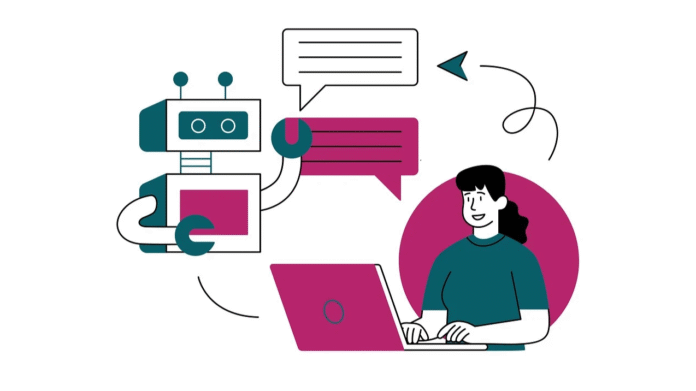Artificial intelligence is no longer confined to research labs or enterprise platforms. Today, AI is actively transforming the user experience in consumer-facing web applications—from personalized recommendations and intelligent search to chatbots and fraud detection. However, bridging the gap between AI models and functional web apps is not always straightforward. It requires thoughtful integration, scalable infrastructure, and strong cross-functional collaboration.
At Thoughtlabs, we specialize in building intelligent, high-performance software solutions that combine web engineering with machine learning. In this article, we’ll explore how startups and digital teams can embed AI into their web applications effectively and efficiently.
Why AI Integration Matters in Modern Web Development
Modern users expect smarter interactions. AI-powered features such as voice search, predictive typing, and recommendation engines enhance user satisfaction and differentiate products. Integrating AI also enables automation, deeper analytics, and adaptive interfaces.
For companies, this means:
- Increased engagement through personalization
- Enhanced automation that reduces support costs
- Improved decision-making with predictive analytics
- Scalable innovation across the product lifecycle
To unlock these benefits, AI must be more than an add-on. It needs to be an integrated part of the web application’s architecture.
Key Challenges in Integrating AI with Web Apps
The path to a seamless AI-web app integration comes with a number of technical and strategic challenges.
Data Availability and Quality
AI thrives on high-quality, well-labeled data. Web apps often collect user-generated content, activity logs, and behavioral data, but this information needs cleaning, normalization, and labeling. Without reliable data pipelines, AI models can become inaccurate or irrelevant.
Real-Time Inference Requirements
Some AI features, like fraud detection or search autocomplete, need responses in milliseconds. This demands low-latency inference pipelines and optimization of models for speed. Web teams must carefully balance performance and accuracy.
Model Deployment and Versioning
Unlike static code, AI models evolve over time. Deploying updated models without disrupting app performance requires robust CI/CD pipelines and model versioning. Tracking model changes ensures reproducibility and rollback if needed.
Cross-Functional Collaboration
Developers, data scientists, and product managers must work together closely. Misalignment between these teams can lead to inefficient integrations or features that underperform. Agile practices and shared documentation help maintain clarity.
Infrastructure and Cost Constraints
AI components, especially those involving deep learning, can strain server resources. Hosting models on the same server as your web app can impact performance. Using cloud-based services and APIs helps manage costs and scalability.
Best Practices for Seamless AI Integration
To effectively bridge the gap between AI and your web application, adopt the following technical and strategic best practices.
Design APIs for Model Access
Expose AI functionality via RESTful or GraphQL APIs. This allows front-end applications to request predictions, scores, or classifications cleanly. Keeping model logic separate from UI code improves maintainability and flexibility.
Use Model Hosting Services
Leverage platforms like AWS SageMaker, Google AI Platform, or Azure ML for hosting models. These services provide scalability, version control, and monitoring tools that simplify model management. They also help decouple the model lifecycle from the core application stack.
Optimize Models for Production
Before deploying, compress models using techniques like quantization or pruning. This reduces inference time and memory usage. Lightweight models are especially important for mobile-responsive web apps.
Implement Asynchronous Workflows
For non-blocking predictions, use message queues or event-driven frameworks. Tools like RabbitMQ, Kafka, or Firebase can handle background inference tasks. This ensures the user experience remains smooth even when AI tasks are computationally heavy.
Monitor Performance and Accuracy
Deploy monitoring tools to track prediction latency, accuracy, and errors. Use logging and analytics to detect data drift or concept drift over time. Continuous monitoring enables proactive retraining and model updates.
Prioritize UX and Explainability
Integrate AI outputs in ways that are clear and useful to users. If using recommendations, show why certain items were chosen. For sensitive applications, such as finance or healthcare, explainability tools build user trust.
Use Cases of AI-Integrated Web Apps
Many modern applications already benefit from tightly woven AI components. Here are a few examples:
- E-commerce: Personalized product suggestions, customer segmentation, and chat-based shopping assistants
- Healthcare: Symptom checkers, image-based diagnostics, and appointment recommendations
- Education: Adaptive learning systems, plagiarism detection, and student engagement analysis
- Finance: Real-time fraud detection, credit scoring, and robo-advisors
- Media Platforms: Content tagging, recommendation engines, and real-time moderation
These use cases highlight how AI adds tangible value across industries and user experiences.
Final Thoughts
Integrating AI into web apps is more than connecting a model to a UI, it’s about architecting systems that evolve, scale, and respond intelligently. Startups and digital product teams that embrace AI integration early can unlock powerful efficiencies and competitive advantages.


